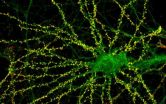(Press-News.org) Shakespeare was a master at portraying profound emotional upset in the physical symptoms of his characters, and many modern day doctors would do well to study the Bard to better understand the mind-body connection, concludes an analysis of his works, published in Medical Humanities.
Kenneth Heaton, a medical doctor and extensively published author on William Shakespeare's oeuvre, systematically analysed 42 of the author's major works and 46 of those of his contemporaries, looking for evidence of psychosomatic symptoms.
He focused on sensory symptoms other than those relating to sight, taste, the heart, and the gut.
He found that Shakespeare's portrayal of symptoms such as dizziness/faintness, and blunted or heightened sensitivity to touch and pain in characters expressing profound emotions was significantly more common than in works by other authors of the time.
Vertigo/giddiness/dizziness is expressed by five male characters in "Taming of the Shrew", "Romeo and Juliet", "Henry VI" part 1, "Cymbeline" and "Troilus and Cressida". The nearest approximation in contemporaries' works was one incident in John Marston's "The Malcontent".
There are at least 11 instances of breathlessness associated with extreme emotion in "Two Gentlemen of Verona", "The Rape of Lucrece", "Venus and Adonis", and "Troilus and Cressida", compared with just two in the works of other writers.
Fatigue/weariness as a result of grief or distress is a familiar sensation among Shakespeare's characters, most notably in "Hamlet", "The Merchant of Venice", "As You Like It", "Richard II" and "Henry IV" part 2. This crops up twice as frequently as in other contemporaries' works, argues Dr Heaton.
Disturbed hearing at a time of high emotion occurs in "King Lear", "Richard II" and "King John" while blunted/exaggerated senses are portrayed in "Much Ado about Nothing", "Venus and Adonis", "King Lear", "Love's Labour's Lost" and "Coriolanus".
"Shakespeare's perception that numbness and enhanced sensation can have a psychological origin seems not to have been shared by his contemporaries, none of whom included such phenomena in the works examined," writes Dr Heaton.
The Bard also uses coldness - for example, "Romeo and Juliet" - and faintness to convey shock, including in "Titus Andronicus", "Julius Caesar", "Love's Labour's Lost", and "Richard III", significantly more frequently than other writers of the period.
Dr Heaton concludes that his data show that Shakespeare "was an exceptionally body-conscious writer," suggesting that the technique was used to make his characters seem more human and engender greater empathy or raise the emotional temperature of his plays and poems.
And his findings should encourage doctors to remember that physical symptoms can have psychological causes, he suggests.
"Many doctors are reluctant to attribute physical symptoms to emotional disturbance, and this results in delayed diagnosis, overinvestigation, and inappropriate treatment," he writes.
"They could learn to be better doctors by studying Shakespeare. This is important because the so-called functional symptoms are the leading cause of general practitioner visits and of referrals to specialists," he says.
### END
Doctors could learn from Shakespeare’s deep understanding of mind-body connection
Body-conscious Shakespeare: Sensory disturbances in troubled characters
2011-11-24
ELSE PRESS RELEASES FROM THIS DATE:
Firefighters more likely to be injured exercising than putting out fires
2011-11-24
Firefighters are more likely to be injured while exercising than while putting out fires, suggests research published online in Injury Prevention.
But carrying patients is the task most likely to require time off work, the study shows.
Combined firefighting and emergency medical services have one of the highest workplace injury and death rates in the US.
The authors looked at data for injuries sustained while at work for 21 fire stations serving the metropolitan area of Tucson, Arizona between 2004 and 2009.
The 650 employees included firefighters, paramedics, ...
Law Enforcement Officials Turning to Facebook as a Crime Fighting Tool
2011-11-24
Increased participation on social networking sites has resulted in law enforcement officers in New York and across the nation to turn to sites such as Facebook for information and evidence.
Officers can use information found on individual users' pages to track their location, view photos and other personal information shared on their profiles. And it is not just information made public by the users' privacy settings. Facebook's privacy agreement allows Facebook to share information posted on the website with law enforcement officials if there is a good faith belief that ...
Researchers develop method for advancing development of antipsychotic drugs
2011-11-24
RICHMOND, Va. (Nov. 23, 2011) – Researchers interested in the treatment of schizophrenia and dementia have clarified how antipsychotic drugs that target a complex of two receptors at the surface of cells in the brain work, according to a new study published online Nov. 23 in the journal Cell.
The multidisciplinary team included researchers from the Virginia Commonwealth University School of Medicine, together with the Mount Sinai School of Medicine in New York and the University of Maryland School of Pharmacy in Baltimore. In an earlier, but related study, the Mount Sinai ...
Mite-y genomic resources for bioenergy crop protection
2011-11-24
WALNUT CREEK, Calif. -- For a pest that isn't quite the size of a comma on a keyboard, the two-spotted spider mite can do a disproportionate amount of damage. These web-spinners extract the nutrients they need from leaves of more than a thousand different plant species, including bioenergy feedstocks and food staples. The cost of chemically controlling spider mites to counteract reduced harvest yields hovers around $1 billion annually, reflecting their significant economic impact.
With a 90-million nucleotide genome, the smallest of those that belong to the group of animals ...
Caltech scientists point to link between missing synapse protein and abnormal behaviors
2011-11-24
PASADENA, Calif. -- Although many mental illnesses are uniquely human, animals sometimes exhibit abnormal behaviors similar to those seen in humans with psychological disorders. Such behaviors are called endophenotypes. Now, researchers at the California Institute of Technology (Caltech) have found that mice lacking a gene that encodes a particular protein found in the synapses of the brain display a number of endophenotypes associated with schizophrenia and autism spectrum disorders.
The new findings appear in a recent issue of the Journal of Neuroscience, with Mary ...
Scientific sleuths pinpoint the guilty coral killers
2011-11-24
The elusive culprits that are killing countless coral reefs around the world can now be nabbed with technology normally used to diagnose human diseases, marine researchers say.
Coral researchers and reef managers will be able to identify coral infections using a new method that allows them to classify specific diseases based on the presence of microbes.
This could lead to more effective action to reduce the impact of disease on the world's imperilled coral reefs.
"Current classification of coral diseases is mostly based on a description of how the coral has deteriorated, ...
What Is Workers' Compensation in Pennsylvania?
2011-11-24
The Pennsylvania Workers' Compensation Act gives injured workers valuable rights. They include payment of medical bills, wage loss compensation, disfigurement awards for work-related facial and neck scars and awards for specific loss of use of a body part (ex. - leg, hand, finger, etc). The following are key points that workers should know about workers' compensation in Pennsylvania.
Workers' Compensation Benefits for Work-Related Injuries
According to the Pennsylvania Workers' Compensation Act, employers must give their full-time, part-time and seasonal employees ...
Blossom end rot: Transport protein identified
2011-11-24
Blossom end rot on tomatoes and cucumbers, bitter-pit in apples – these unpleasant blemishes on fruits and vegetables not only compromises the flavor but also causes significant harvest losses every year. The characteristic blotches and spotting can be traced back to insufficient calcium uptake or faulty calcium transport within the plant. Consequently, the damage can occur even if the soil provides sufficient calcium. A team under the leadership of scientists from the University of Zurich and Pohang University of Science and Technology, Korea, has for the first time identified ...
Spider mite's secrets revealed
2011-11-24
The tiny two-spotted spider mite (Tetranychus urticae) causes much anxiety for farmers, and has been, to date, a scientific mystery. It feeds on over 1,100 species of plants, including 150 greenhouse plants and crops, such as maize, soy, tomatoes and citrus. The cost of chemically controlling damage caused by the spider mite exceeds USD 1 billion per year. In the latest issue of the journal Nature, a multinational consortium of scientists publish the sequenced genome of the spider mite, revealing how it is capable of such feeding frenzy, as well as other secrets of this ...
Enhanced treatment of brain tumors
2011-11-24
Glioblastoma is regarded as the most malignant form of brain tumor. In many cases, neurosurgeons are not able to remove such tumors completely because of the risk of destroying too much brain tissue in the process. Moreover, it is often impossible to identify all the fine extensions by which the tumor spreads into surrounding healthy tissue. To at least slow down the growth of tumor cells that have remained in the head, almost all glioblastoma patients are treated by radiotherapy after surgery.
"Unfortunately, we can only delay cancerous growth in this way, but we cannot ...
LAST 30 PRESS RELEASES:
Numbers in our sights affect how we perceive space
SIMJ announces global collaborative book project in commemoration of its 75th anniversary
Air pollution exposure and birth weight
Obstructive sleep apnea risk and mental health conditions among older adults
How talking slows eye movements behind the wheel
The Ceramic Society of Japan’s Oxoate Ceramics Research Association launches new international book project
Heart-brain connection: international study reveals the role of the vagus nerve in keeping the heart young
Researchers identify Rb1 as a predictive biomarker for a new therapeutic strategy in some breast cancers
Survey reveals ethical gaps slowing AI adoption in pediatric surgery
Stimulant ADHD medications work differently than thought
AI overestimates how smart people are, according to HSE economists
HSE researchers create genome-wide map of quadruplexes
Scientists boost cell "powerhouses" to burn more calories
Automatic label checking: The missing step in making reliable medical AI
Low daily alcohol intake linked to 50% heightened mouth cancer risk in India
American Meteorological Society announces Rick Spinrad as 2026 President-Elect
Biomass-based carbon capture spotlighted in newly released global climate webinar recording
Illuminating invisible nano pollutants: advanced bioimaging tracks the full journey of emerging nanoscale contaminants in living systems
How does age affect recovery from spinal cord injury?
Novel AI tool offers prognosis for patients with head and neck cancer
Fathers’ microplastic exposure tied to their children’s metabolic problems
Research validates laboratory model for studying high-grade serous ovarian cancer
SIR 2026 delivers transformative breakthroughs in minimally invasive medicine to improve patient care
Stem Cell Reports most downloaded papers of 2025 highlight the breadth and impact of stem cell research
Oxford-led study estimates NHS spends around 3% of its primary and secondary care budget on the health impacts of heat and cold in England
A researcher’s long quest leads to a smart composite breakthrough
Urban wild bees act as “microbial sensors” of city health.
New study finds where you live affects recovery after a hip fracture
Forecasting the impact of fully automated vehicle adoption on US road traffic injuries
Alcohol-related hospitalizations from 2016 to 2022
[Press-News.org] Doctors could learn from Shakespeare’s deep understanding of mind-body connectionBody-conscious Shakespeare: Sensory disturbances in troubled characters

